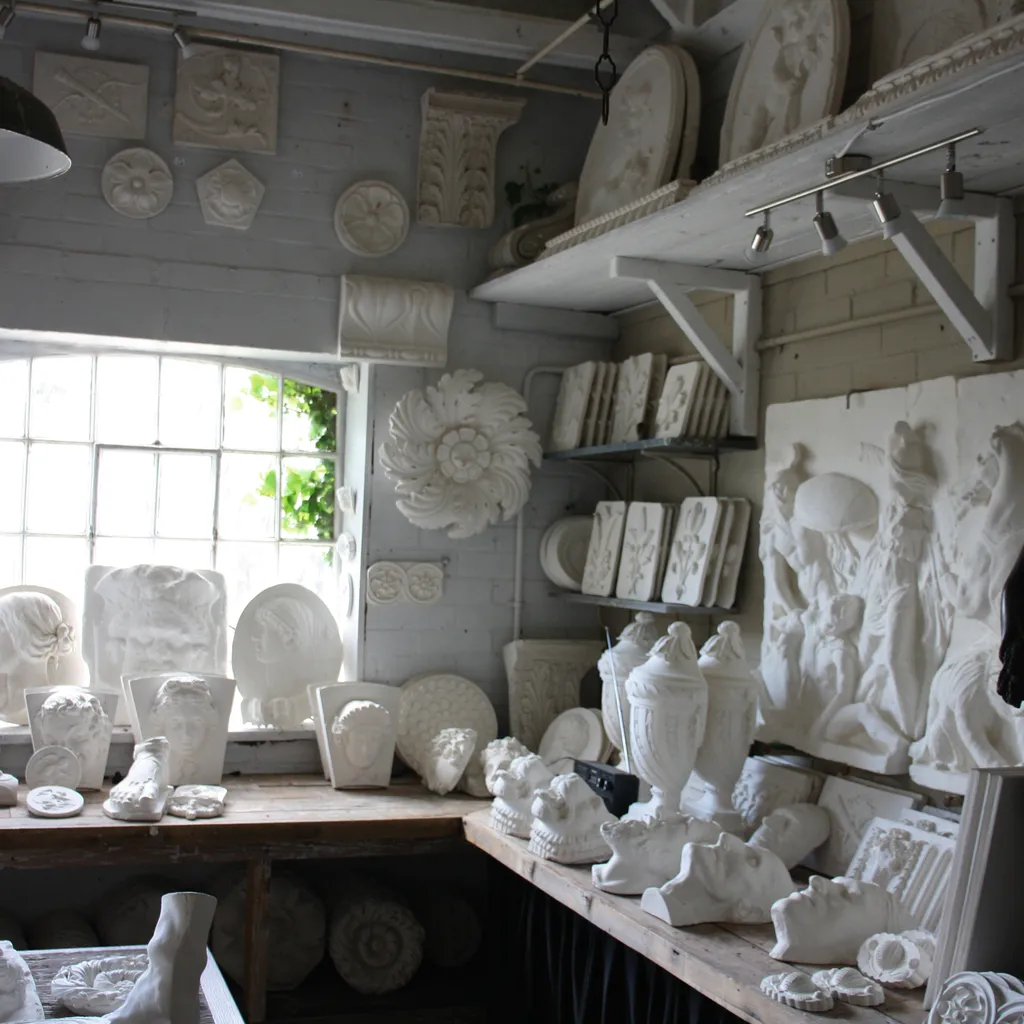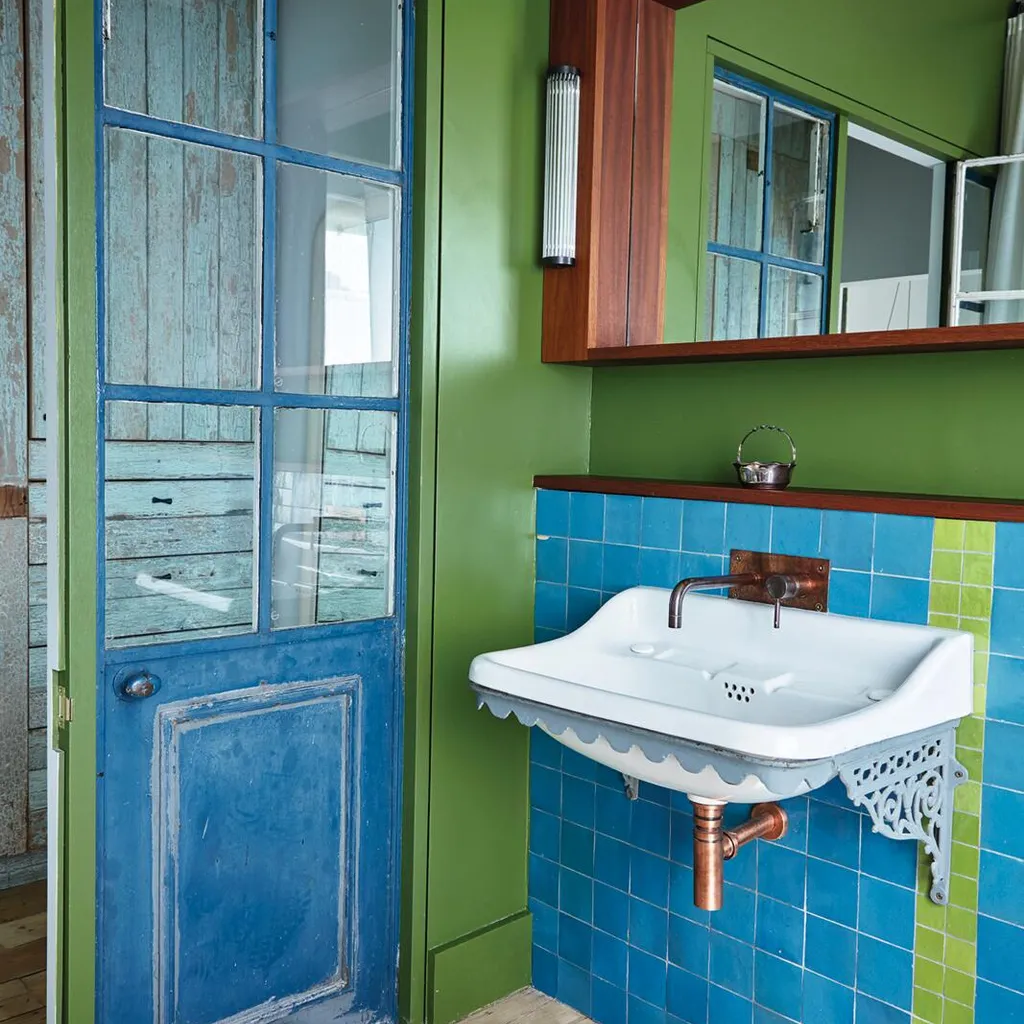In a warehouse, in 2013, reclamation expert Anthony Reeve came across something extraordinary, even to this veteran salvage hunter – huge Georgian railings with anthemia panels. Built in 1790 to front an asylum for deaf and mute children on London’s Old Kent Road, they had survived right through both World Wars and the mid-century slum clearances until the flyover, built in 1970, saw them taken out and put into storage.

After Anthony wrote a blog post about the railings, sign language historian Peter Brown, a former pupil of the asylum’s successor school, got in touch. Within the deaf community, he said, there was a great reverence for the asylum. He duly bought the railings for the community. ‘It was quite moving,’ reflects Anthony. ‘Things have an uncanny ability to find their way into the hands of the right person if you wait long enough, and the railings found the right home. Their story is safe.’
Anthony is managing director of LASSCO’s Three Pigeons reclamation yard in Oxfordshire, one of two main sites run by the company (a third, LASSCO Ropewalk in Bermondsey, focuses on flooring and also hosts Maltby Street Market). One of the largest and longest-established UK reclamation businesses, LASSCO was set up 42 years ago with Anthony employed for the last 25 of those.

Buffeted around various London sites by gentrification, LASSCO’s city base is now anchored at Brunswick House in Vauxhall, a Georgian mansion incongruously surrounded by tower blocks and tarmac. The stylish curation of the architectural salvage here means the store looks like the backdrop to a period drama, fuelling its secondary function as an event space and wedding venue.
Spin-offs and sidelines are the norm in what is a diverse industry. Some companies are specialists – from tile experts Maitland & Poate in London, to the ecclesiastical stock of Antique Church Furnishings in Surrey, the sanitary fittings of Mongers in Norfolk, and the fireplaces of Wharton Antiques in Somerset.
Others are known for location-specific stock (Glasgow Salvage is the go-to for owners of the city’s high-ceilinged tenements looking to fit suitably lofty period doors) or lean more towards the building trade.
Cawarden, in Staffordshire, is like a vintage Travis Perkins with its stock of reclaimed bricks, cobbles and kerb stones. Daviot salvage yard, outside Inverness, sells custom-built shepherds’ huts made, in part, with the whimsical flotsam and jetsam in stock.
The USP at London-based Retrouvius is the pairing of a reclamation business with an interior design studio. First opened in 1993, husband-and-wife owners Adam Hills and Maria Speake were prompted into business by witnessing the destruction of period buildings when they were studying architecture in Glasgow.
Moving to London four years later, they put their background to good use, doing much of the dismantling themselves and knowing what will appeal to their core clientele of architects, interior designers and set designers (among the props they supplied for the set of Trainspotting was the infamous toilet, salvaged from East Kilbride tax office).
While Retrouvius’s salvage yard is a thing of curated beauty, the design side of the business demonstrates the flexibility of finishes you can achieve with reclaimed materials: they don’t have to be used to recreate what period buildings might originally have looked like but can be used much more diversely.
Maria is also known for her expert knowledge of materials, and how to deploy them: that salvaged iroko can be great in kitchens (absorbing oils from cooking keeps it conditioned), or that antique textiles make good room dividers in listed buildings.

Despite their variety, all reclamation businesses share an appreciation of the unique, and for provenance. The beauty of imperfection and patina has long been appreciated by reclamation fans but, having waned in the disposable days of the late 20th century, the inclination for reuse is flourishing again.
While some salvage businesses have had a challenging year, others had strong sales throughout the pandemic. ‘Nothing focuses the mind more on the house that you’re in than being confined to it,’ says Anthony.
In this Covid era, seeking out the ‘well-worn’ ancient rather than the ‘blingy’ modern chimes with prevailing attitudes; those who don’t have the budget for major renovations are buying smaller reclaimed items to display on shelves and mantelpieces.
As Covid regulations shifted dining and socialising opportunities outdoors, yards also reported a rise in sales of gardenalia and outdoor furniture, with restaurants snapping up vintage German beer tables and homeowners buying lichen-speckled urns and distressed wooden wheelbarrows to plant up.
Many of these pieces will later appear on Instagram, a platform Karl Horler of Frome Reclamation says has revolutionised the way he sells. Having a yard in one of the most celebrity-speckled corners of the country has always generated strong sales, but Instagram has radically changed his operation.

‘It’s a really strong tool, and it’s free,’ he says. ‘You put something on there and it’s around the world instantly. I post three or four things each day and they usually sell within the day, sometimes within seconds.’ It’s broadened the market too. While the regulars remain – other dealers, boutique hotels (Babington House is just down the road) and local renovators – Instagram has given him more of a global reach.
There is another reason why reclamation is prospering. By keeping items out of landfill, salvage yards are green building pioneers. In the wake of the climate emergency, the full-circle approach to building is becoming increasingly widespread (this year’s Pritzker Prize was awarded to Anne Lacaton and Jean-Philippe Vassal who specialise in repurposing existing buildings rather than ripping them down).
It’s a shift Salvo is championing as the main UK partner in the EU’s three-year FCRBE project. ‘We’re calling the project futuREuse because we believe reuse should be the priority in the race to net zero.
It was driven by the shocking statistic that only one per cent of building materials are currently reused,’ says Salvo CEO Sara Morel. ‘We want to encourage the construction industry to increase its reuse of reclaimed building materials by 50 per cent by 2032.’
The organisation long ago instigated a voluntary code of conduct for reclamation yards designed to reassure buyers that they were not purchasing anything stolen, wrongly removed from a listed site or toxic. A list of dealers who have signed up to the code can be found on Salvo’s website, or identified by the code’s crane logo.
Now it aims to expand this by publishing the first industry analysis of the carbon benefit of reuse, and by calling on governments to mandate reuse in their sustainable development goals.
Morways in Norfolk illustrates how this might work; John and Jo Morfoot’s immaculate yard is already run with a building trade-focused service that celebrates its green credentials. Having experience in renovation, plus doing their own dismantling, mean the couple have a high degree of quality control and good contacts.

Perhaps uniquely among reclamation yards, buyers can try before they buy – the couple recently used some of their stock to build a beautifully restrained glampsite, Settle, a collection of bell tents, with railway carriages and a cabin built entirely from reclaimed materials. ‘Even the insulation has been salvaged,’ says John. ‘It’s Celotex. If you’re dismantling a big building and there are sheets of Celotex, most of that would normally go into a skip, but they cost 40 quid a shot.’
How items are dismantled and installed is crucial if reuse is to work, says James Wilson of Cumbria’s Yew Tree Barn. ‘Flagstones ought to be laid properly so they can come back up. It’s the same with floorboards. As long as people have builders who understand how to use reclaimed materials they should have another life again, if they need it.’
Over its 35 years, the family business Wilson Reclamation Services has expanded to encompass a cafe and gift store as well as the salvage yard, but its stock of building materials is what the site is best known for; one of its biggest sellers is local blue slate flagstones. ‘Customers who buy a period farmhouse or cottage in Cumbria want these specific flagstones,’ says James.
Anthony Reeve explains that a lot of the reclaimed pine sold by LASSCO’s flooring department is from the Baltics, where the Victorians felled old slow-growth trees. Compared to the fast-growing crops often used today, the timber is really robust.
‘The materials that landed then are embedded in Britain’s building stock and they are far superior to what you find today, so they should absolutely be reused,’ Anthony says.
Is the message getting through? ‘People are more in tune with it today than they have ever been,’ he believes. ‘They celebrate patina – and will pay good money for it.’ Especially if it comes with a good story.
